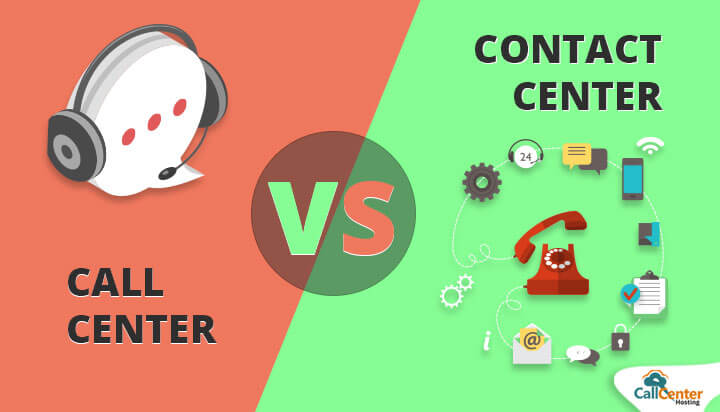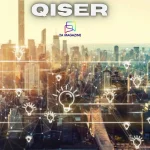You might have observed that “contact center” and “call center” are often used interchangeably, as both aim to serve customers. However, their similarities mostly stop there. Despite their common goal, contact centers and call centers differ significantly in their operations and scope.
What is a contact center?
A contact center is a planned workplace or software technology that focuses on handling a business’s customers’ communication. Apart from taking phone calls, contact centers communicate with customers through emails, live chat, messages, social media, and even sending emails. This way allows the customers to decide on which media they would like to be communicated to and be attended to accordingly.
Key features of a contact center
- Multichannel communication: Contact centers handle interactions across several channels, offering customers flexibility and choice in how they communicate.
- Unified data management: They gather and analyze data from multiple sources, providing a comprehensive view of customer interactions and behavior.
- Advanced training and skills: Agents are provided with contact center training to manage various communication channels, requiring proficiency in multiple technologies and tools.
Contact center vs. call center: key differences
While call centers and contact centers both aim to manage customer interactions, they differ in several critical ways:
- Customer interaction channels:
- Call centers: Although other channels can be a part of call centers, they are mostly incorporated in a limited manner and the central operation is based on telephone call handling.
- Contact centers: They easily integrate and allow clients to engage through different touchpoints such as live chat, emails, social networks, and so on. It gives a stronger integration of the customer journey.
- Amount of customer data:
- Call centers: Gather data primarily from phone interactions, which may limit insights into broader customer experiences.
- Contact centers: Collect and analyze data from multiple channels, providing a richer understanding of customer needs and behaviors. Tools can transcribe calls, track keywords, and aggregate insights from different interaction sources.
- Agent skills and training:
- Call centers: Agents are often specialized in handling phone calls and may not be trained for other communication channels.
- Contact centers: Require agents to be versatile, with the ability to manage and switch between different channels efficiently. This often necessitates more extensive customer service training and familiarity with various technologies.
- Customer experience:
- Call centers: Focus on resolving issues via phone calls, which can sometimes lead to longer wait times and limited interaction channels.
- Contact centers: Enhance the customer experience by providing multiple communication options, faster responses, and more personalized interactions. This can improve overall customer satisfaction and engagement.
- Self-service opportunities:
- Call centers: May offer limited self-service options, relying heavily on direct interactions with agents.
- Contact centers: Often include self-service tools like chatbots, knowledge bases, and interactive voice response (IVR) systems, empowering customers to resolve issues independently and reducing the workload on agents.
Types of contact centers
Contact centers can be categorized based on their functions and operational models:
- Inbound contact centers: Respond to the customers’ queries, complaints, questions, or any other issues concerning support, billing, and technical.
- Outbound contact centers: Shift towards activity-oriented communications like telemarketing, lead generation, and customer surveys.
- Multichannel contact centers: Offer assistance through different forms of communication but interoperability can often be an issue.
- Omnichannel contact centers: Integrate various channels into a unified system, ensuring consistent customer experiences and access to comprehensive interaction histories.
- On-premises contact centers: Operate on physical servers located at company premises, requiring significant infrastructure and maintenance.
- Virtual/remote contact centers: Use cloud-based solutions allowing agents to work from anywhere with an internet connection, offering flexibility and scalability.
Contact center technologies
Modern contact centers rely on various technologies to enhance their operations:
- VoIP (Voice Over Internet Protocol): Allow one to make voice calls through the internet connection rather than the use of PSTN or wired telecommunications systems as adopted in virtual structures.
- CTI (Computer Telephony Integration): It links telephone networks with computers to enable more features such as dialing proficiency and context-sensitive information delivery.
- Call queuing: Coordinates incoming calls so that no caller is placed on hold for too long or receive a busy signal.
- ACD (Automatic Call Distribution): Connects the customer to the right agents depending on the factors such as their skill level or the priority of the call.
- IVR (Interactive Voice Response): Another form of self-service it offers is through auto answering with menu options to ease client dealings.
- Call recording: Records issues to do with quality and identification of calls to collect data, with the consideration of privacy regulations.
- Data analytics: Scoring capabilities that can be useful in identifying trends in overall performance as well as implemented performance metrics, and agent and customer productivity.
- CRM integration: Integrates contact center facility with CRM solutions to ensure a unified picture of customer engagements.
- CDP integration: Incorporates the use of CDPs as a central hub where customer information can be brought together and help improve personalization.
- Chatbots: These include AI-enabled tools that help agents respond to common questions and address technical requirements that do not overload agents.
- Omnichannel integration: This helps to maintain continuity of the customer interaction process across different forms of communication.
- Unified UI: Integrates all the tools and information to make sure that the agents work more efficiently.
Emerging trends in contact center technologies
As technology continues to evolve, several trends are shaping the future of contact centers:
- AI integration: Enhances efficiency through virtual agents, automated responses, and sentiment analysis.
- Cloud-based solutions: Offer flexibility and scalability, allowing for remote work and seamless updates.
Conclusion
“Contact center” and “call center” differ in approach. Call centers handle phone interactions, while contact centers manage multiple channels like email and chat, using advanced technology for a more integrated service. Understanding these differences helps businesses optimize their customer service strategies.







